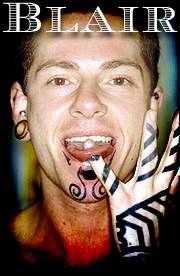
It can safely be said that 29-year old artist, piercer, brander, cutter, body modifier, and ex-school janitor Blair has is pushing traditional strike-branding to the limits of the art form. In addition to this, he works in nearly all forms of body modifications, from scarification to piercing to implants to subincision. Blair can be reached at Toronto's Tat-A-Rama. As with all BME interviews, this is pretty much the raw text of our conversation as it happened. Watch for a more "refined" version of this in an upcoming TATTOO SAVAGE.
You were janitor?
I used to work for the Peel board of education. I basically did custodial work. I worked in schools from J. K. to 5, and 9 to 13 as well.
No one in the schools minded that you had your face tattooed or anything like that?
No, I think I'm a pretty nice person and pretty hard to hate.
Then how did you move to start doing piercing and branding professionally?
My friend went to get a tattoo, and I went along. It's a Harley Davidson tattoo actually--I got a Harley and it's a pretty amazing feeling. The fact you can travel anywhere you want to. It was my first vehicle, but I sold it to buy an autoclave. That's far more exciting anyway. If I hadn't got autoclave, I wouldn't be doing anything I'm doing now.
Anyway, I got my first tattoo, and I thought what an amazing art form--you create this permanent art on someone's body. I bought tattoo equipment from Spaulding, and starting doing tattoos on myself and on friends, but I couldn't really pick it up. It wasn't really what I wanted to do. Piercing was pretty new at the time; this was about 1990. I saw my first tongue piercing on a tattoo artist that I knew, and I saw my first septum piercing on a girl that worked reception at a tattoo studio. I soon as I knew you could get it, I was right there, I wanted my septum pierced. Then I started getting more piercings, and doing a lot of reading on anatomy, and looking through articles on piercing, and of course all the old PFIQ's and stuff like that. Then from there, piercing myself, and my brother, and close friends. I think I was just so picky and so into my work that I started to get a reputation. People knew who I was even though I was far from the city.
Were you working out of your house?
Yes, I was just working out of my house. I had a spare room that I converted into a studio -- I had the autoclave, and a dentist's chair, lots of different photographs of traditional people from all over the world with different modifications. This was at my parent's place.
What did they think?
They were pretty excited. They were happy that I was sober and doing something that I really, really enjoyed.
It got to the point where I was loving it so much that I pretty much knew that that was what I was going to do for the rest of my life. From there I casually went from working for the Peel Board to piercing full time and then I never looked back. Not ever. I had a vision actually... there was a time in my life where I spent a lot of time wondering what I was looking for. And then I had this vision that said that if I followed body modification, and body piercing, that all other aspects of my life would eventually just fall into place. It gave me something to focus on and I spent pretty much all of my time and energy on doing body modifications, and everything did fall into place.
How did this happen? What do you mean by "vision"?
It's hard to explain visions -- it's not quite like a dream,
and it's not quite awake. It's just all of a sudden you have
this realization. It's as if someone gets half of a book and
throws it into your brain in one second -- this vast amount
of knowledge just pops in.

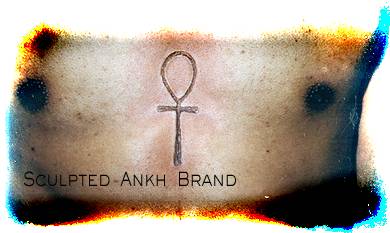
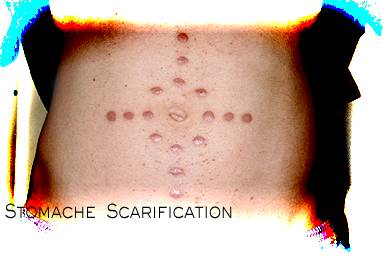
 Is the technical aspect part of the thrill too -- doing a
perfect circle?
Is the technical aspect part of the thrill too -- doing a
perfect circle?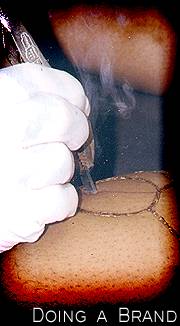
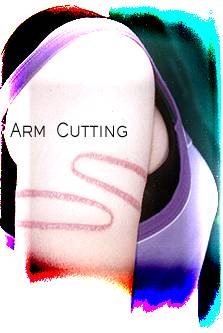 Of all the different types of scarification, do you think
that branding is the easiest to get really first-class
results with? Is it easier than cutting?
Of all the different types of scarification, do you think
that branding is the easiest to get really first-class
results with? Is it easier than cutting?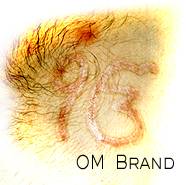 As an artist, how is the experience of doing a brand
different than the experience of doing a piercing?
As an artist, how is the experience of doing a brand
different than the experience of doing a piercing?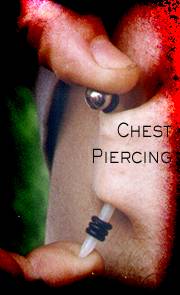
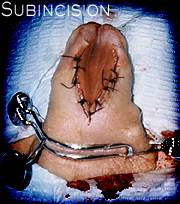
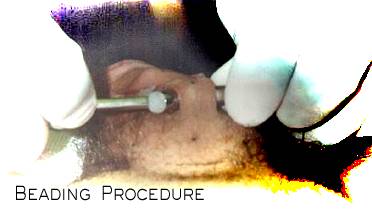

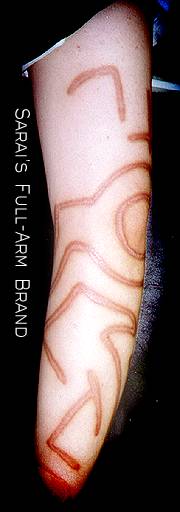
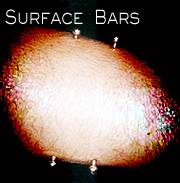
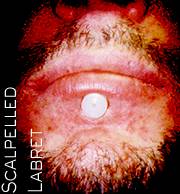
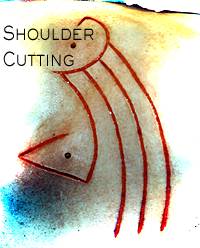 For someone doing wild procedures, you've gotten virtually
no press.
For someone doing wild procedures, you've gotten virtually
no press.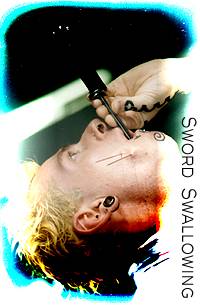 Earlier you said that you spent time meditating and praying.
What did you mean by that? Where are you spiritually?
Earlier you said that you spent time meditating and praying.
What did you mean by that? Where are you spiritually?